
Journal Menu
► ▼ Journal Menu-
- Magnetochemistry Home
- Aims & Scope
- Editorial Board
- Reviewer Board
- Topical Advisory Panel
- Instructions for Authors
- Special Issues
- Topics
- Sections
- Article Processing Charge
- Indexing & Archiving
- Editor’s Choice Articles
- Most Cited & Viewed
- Journal Statistics
- Journal History
- Journal Awards
- Editorial Office
- 10th Anniversary
Journal Browser
► ▼ Journal BrowserNeed Help?
Announcements
29 September 2024
MDPI New Journal Proposal—Invitation to Shape the Future of Open Science Together

As a leader in open access publishing, MDPI is eager to explore new collaboration opportunities, including the launch of new journals and the transfer of existing ones. At present, MDPI publishes over 400 journals, more than 160 of which have established partnerships with academic organizations. Additionally, we publish 19 association journals.
In order to enhance exchange and cooperation with scientific researchers and share the results of open science, MDPI invites experts and scholars from various fields to submit proposals for new journal collaboration opportunities. If your proposal is approved, you could take on the role of Editor-in-Chief, Deputy Editor-in-Chief, or Editorial Board Member of the journal. This position allows you to manage the manuscript review process alongside our editorial department, participate in calls for papers, strengthen your network with scholars in the field, expand scientific research cooperation, enhance your personal and academic influence internationally, and play a leading role in academia.
Once the new journal is online, MDPI will provide a variety of promotional channels to market the journal internationally.
MDPI will offer various promotional channels to enhance its visibility and promote it internationally.
How can you determine the theme of a new journal?
- Assess research hotspots/academic frontiers;
- Assess pioneers in the field/key research directions of universities;
- Determine whether MDPI has already established a journal in the field.
You can browse MDPI’s existing journals at the following link: https://www.mdpi.com/about/journals.
Advantages of collaborating with MDPI:
- MDPI is a global leader in open-access publishing with extensive academic resources.
- MDPI offers a professional publishing team that provides comprehensive support throughout the publishing process.
- MDPI’s diverse promotional platforms and channels help journals quickly increase their international visibility and influence.
We invite you to submit new journal proposal here, and contribute to academic development! In addition, if your institution (university, institute, college, national key laboratory, society, etc.) intends to establish a journal, you can also submit a draft to MDPI on its behalf.
27 September 2024
MDPI’s 2023 Travel Awards—Winners Announced

MDPI journals frequently grant travel awards to empower junior researchers to showcase their latest research at academic conferences, thereby amplifying their impact within their research fields.
We extend our heartfelt congratulations to the 103 recipients of MDPI's 2023 Travel Awards from different countries and territories for their exceptional presentations. These outstanding individuals were selected by the journal editors based on the strength of their research proposals and the anticipated impact of their presentations at academic conferences. We commend their exceptional contributions and wish them continued success in their academic endeavors.
MDPI will continue to provide support and recognition to the academic community. To learn more about the list of awardees, please visit the following pages:
- Biology and Life Sciences;
- Chemistry and Materials Sciences;
- Engineering;
- Environmental and Earth Sciences;
- Medicine and Pharmacology;
- Public Health and Healthcare;
- Others.
About MDPI Awards:
To reward the academic community, especially young researchers, and enhance communication among scientists, MDPI journals regularly offer various awards to researchers in specific fields. These awards, serving as a source of inspiration and recognition, help raise the influence of talented individuals who have been credited with outstanding achievements and are making a significant contribution to the advancement of their fields.
To explore more MDPI awards, please click here.
24 September 2024
Magnetochemistry | Selected Papers in 2022–2023: Spotlight on Magnetic Properties of Coordination Complexes
We are pleased to share the selected papers from Magnetochemistry (ISSN: 2312-7481) in 2022 and 2023. These papers spotlight recent advancements in the magnetic properties of coordination complexes. The list of papers is as follows.
“Novel Tetranuclear Heterometallic Mn3Ni and Mononuclear Ni Complexes with an ONO Schiff Base Ligand: Synthesis, Crystal Structures, and Magnetic Properties”
by Masato Fukuda, Ken Eguchi, Kazuma Matsumoto, Ko Yoneda, Yasunori Yamada, Haruka Yoshino, Yuki Imamura, Naoya Yamamoto, Masaaki Ohba and Masayuki Koikawa
Magnetochemistry 2023, 9(11), 225; https://doi.org/10.3390/magnetochemistry9110225
Available online: https://www.mdpi.com/2312-7481/9/11/225
“Novel Linear Trinuclear CuII Compound with Trapped Chiral Hemiaminal Ligand: Magnetostructural Study”
by Carlos Cruz, Nathalie Audebrand, Dayán Páez-Hernández and Verónica Paredes-García
Magnetochemistry 2023, 9(7), 175; https://doi.org/10.3390/magnetochemistry9070175
Available online: https://www.mdpi.com/2312-7481/9/7/175
“Spin Frustrated Pyrazolato Triangular CuII Complex: Structure and Magnetic Properties, an Overview”
by Walter Cañón-Mancisidor, Patricio Hermosilla-Ibáñez, Evgenia Spodine, Verónica Paredes-García, Carlos J. Gómez-García and Diego Venegas-Yazigi
Magnetochemistry 2023, 9(6), 155; https://doi.org/10.3390/magnetochemistry9060155
Available online: https://www.mdpi.com/2312-7481/9/6/155
“Magneto-Structural Analysis of Hydroxido-Bridged CuII2 Complexes: Density Functional Theory and Other Treatments”
by Debpriyo Goswami, Shanti Gopal Patra and Debashis Ray
Magnetochemistry 2023, 9(6), 154; https://doi.org/10.3390/magnetochemistry9060154
Available online: https://www.mdpi.com/2312-7481/9/6/155
“Driving a Molecular Spin-Peierls System into a Short Range Ordered State through Chemical Substitution”
by Adam Berlie, Ian Terry and Marek Szablewski
Magnetochemistry 2023, 9(6), 150; https://doi.org/10.3390/magnetochemistry9060150
Available online: https://www.mdpi.com/2312-7481/9/6/150
“A Cu12 Metallacycle Assembled from Four C3-Symmetric Spin Frustrated Triangular Units”
by Basharat Ali, Grégoire David, Frédéric Gendron, Xiao-Lei Li, Olivier Cador, Winfried Plass, Boris Le Guennic and Jinkui Tang
Magnetochemistry 2023, 9(5), 122; https://doi.org/10.3390/magnetochemistry9050122
Available online: https://www.mdpi.com/2312-7481/9/5/122
“Two One-Dimensional Copper-Oxalate Frameworks with the Jahn–Teller Effect: [(CH3)3NH]2[Cu(μ-C2O4)(C2O4)]·2.5H2O (I) and [(C2H5)3NH]2[Cu(μ-C2O4)(C2O4)]·H2O (II)”
by Bin Zhang, Yan Zhang, Zheming Wang, Yang Sun, Tongling Liang, Mei Liu and Daoben Zhu
Magnetochemistry 2023, 9(5), 120; https://doi.org/10.3390/magnetochemistry9050120
Available online: https://www.mdpi.com/2312-7481/9/5/120
“A 3D Coordination Polymer Based on Syn-Anti Bridged [Mn(RCOO)2]n Chains Showing Spin-Canting with High Coercivity and an Ordering Temperature of 14 K”
by Soumen Kumar Dubey, Maxcimilan Patra, Kajal Gupta, Subham Bhattacharjee, Rajat Saha and Carlos J. Gómez-García
Magnetochemistry 2023, 9(2), 55; https://doi.org/10.3390/magnetochemistry9020055
Available online: https://www.mdpi.com/2312-7481/9/2/55
“Crystal Structures and Magnetic Properties of Diaquatetrapyridinenickel(II) and Diaquatetrapyridinecobalt(II) Complexes”
by Hiroshi Sakiyama, Yuya Yamamoto, Ryusei Hoshikawa and Ryoji Mitsuhashi
Magnetochemistry 2023, 9(1), 14; https://doi.org/10.3390/magnetochemistry9010014
Available online: https://www.mdpi.com/2312-7481/9/1/14
“Application of the Heptacyanidorhenate(IV) as a Metalloligand in the Design of Molecular Magnets”
by Kira E. Vostrikova
Magnetochemistry 2022, 8(12), 189; https://doi.org/10.3390/magnetochemistry8120189
Available online: https://www.mdpi.com/2312-7481/8/12/189
“Binuclear Nickel Complexes of a New Di(hydroxyphenyl)imidazolate”
by Igor A. Nikovskiy, Kseniia M. Karnaukh, Dmitry Yu. Aleshin, Kirill A. Spiridonov, Anastasia A. Danshina, Yulia V. Nelyubina, Alexander V. Polezhaev and Valentin V. Novikov
Magnetochemistry 2022, 8(10), 132; https://doi.org/10.3390/magnetochemistry8100132
Available online: https://www.mdpi.com/2312-7481/8/10/132
“Solid-State Self-Assembly of a Linear Hexanuclear Copper(II) Oxamate Complex with Alternating Antiferro- and Ferromagnetic Coupling”
by Ana Luísa A. Lage, Luísa A. Ribeiro, Antônio C. Doriguetto, Carlos B. Pinheiro, Wallace C. Nunes, Emerson F. Pedroso and Cynthia L. M. Pereira
Magnetochemistry 2022, 8(10), 116; https://doi.org/10.3390/magnetochemistry8100116
Available online: https://www.mdpi.com/2312-7481/8/10/116
“Heterometallic Chain Compounds of Tetrakis(µ-carboxylato)diruthenium and Tetracyanidoaurate”
by Masahiro Mikuriya, Yusuke Tanaka, Daisuke Yoshioka, Motohiro Tsuboi, Hidekazu Tanaka and Makoto Handa
Magnetochemistry 2022, 8(5), 48; https://doi.org/10.3390/magnetochemistry8050048
Available online: https://www.mdpi.com/2312-7481/8/5/48
24 September 2024
Magnetochemistry | Selected Papers in 2022–2023: Spotlight on Single-Molecule Magnets
We are pleased to share the selected papers from Magnetochemistry (ISSN 2312-7481) for 2022 and 2023. These papers spotlight recent advancements in single-molecule magnets. The list of papers is as follows:
“The Organic Ammonium Counterion Effect on Slow Magnetic Relaxation of the [Er(hfac)4]− Complexes”
by Tatiana G. Prokhorova, Denis V. Korchagin, Gennady V. Shilov, Alexei I. Dmitriev, Mikhail V. Zhidkov and Eduard B. Yagubskii
Magnetochemistry 2023, 9(6), 159; https://doi.org/10.3390/magnetochemistry9060159
Available online: https://www.mdpi.com/2312-7481/9/6/159
“Honey-like Odor Meets Single-Ion Magnet: Synthesis, Crystal Structure, and Magnetism of Cobalt(II) Complex with Aromatic Trans-Cinnamic Acid”
by Petr Halaš, Ivan Nemec and Radovan Herchel
Magnetochemistry 2023, 9(11), 229; https://doi.org/10.3390/magnetochemistry9110229
Available online: https://www.mdpi.com/2312-7481/9/11/229
“A Chain of Vertex-Sharing {CoIII2CoII2}n Squares with Single-Ion Magnet Behavior”
by Maria-Gabriela Alexandru, Diana Visinescu, Sergiu Shova, Joan Cano, Nicolás Moliner, Francesc Lloret and Miguel Julve
Magnetochemistry 2023, 9(5), 130; https://doi.org/10.3390/magnetochemistry9050130
Available online: https://www.mdpi.com/2312-7481/9/5/130
“Slow Magnetic Relaxation and Luminescence Properties in Tetra β-Diketonate Lanthanide(III) Complexes”
by Saskia Speed, Ànnia Tubau, Ramon Vicente, Eva Castro and Mercè Font-Bardia
Magnetochemistry 2023, 9(5), 131; https://doi.org/10.3390/magnetochemistry9050131
Available online: https://www.mdpi.com/2312-7481/9/5/131
“A DyIII Complex of a Pentadentate Schiff Base with Field-Induced Single-Ion Magnet Behaviour”
by Julio Corredoira-Vázquez, Paula Oreiro-Martínez, Ana M. García-Deibe, Jesús Sanmartín-Matalobos and Matilde Fondo
Magnetochemistry 2023, 9(3), 62; https://doi.org/10.3390/magnetochemistry9030062
Available online: https://www.mdpi.com/2312-7481/9/3/62
“Zero-Field Slow Magnetic Relaxation in Binuclear Dy Acetylacetonate Complex with Pyridine-N-Oxide”
by Valeriya P. Shtefanets, Gennady V. Shilov, Denis V. Korchagin, Elena A. Yureva, Alexei I. Dmitriev, Mikhail V. Zhidkov, Roman B. Morgunov, Nataliya A. Sanina and Sergey M. Aldoshin
Magnetochemistry 2023, 9(4), 105; https://doi.org/10.3390/magnetochemistry9040105
Available online: https://www.mdpi.com/2312-7481/9/4/105
“Something You Need Might Be under Your Feet: Molecular Magnetism of Heavy Kramers Lanthanide Hydrated Chlorides and Their Complexes with Polydentate Terpy Ligand”
by Valeriya P. Shtefanets, Gennady V. Shilov, Denis V. Korchagin, Elena A. Yureva, Alexei I. Dmitriev, Mikhail V. Zhidkov, Roman B. Morgunov, Nataliya A. Sanina and Sergey M. Aldoshin
Magnetochemistry 2023, 9(1), 31; https://doi.org/10.3390/magnetochemistry9010031
Available online: https://www.mdpi.com/2312-7481/9/1/31
“Single-Molecule Magnets Based on Heteroleptic Terbium(III) Trisphthalocyaninate in Solvent-Free and Solvent-Containing Forms”
by Maxim A. Faraonov, Alexander G. Martynov, Marina A. Polovkova, Salavat S. Khasanov, Yulia G. Gorbunova, Aslan Yu. Tsivadze, Akihiro Otsuka, Hideki Yamochi, Hiroshi Kitagawa and Dmitri V. Konarev
Magnetochemistry 2023, 9(2), 36; https://doi.org/10.3390/magnetochemistry9020036
Available online: https://www.mdpi.com/2312-7481/9/2/36
“The Assembly of Grid-type Lanthanide Cluster”
by Jinsong Li, Fan Zhang, Xuefeng Guo, Dan Liu and Jianfeng Wu
Magnetochemistry 2023, 9(1), 4; https://doi.org/10.3390/magnetochemistry9010004
Available online: https://www.mdpi.com/2312-7481/9/1/4
“Slow Magnetic Relaxation in Cobalt(II) Complexes with One-Dimensional Hydrogen-Bonded Networks”
by Ryoji Mitsuhashi, Hiroshi Sakiyama and Yoshihito Hayashi
Magnetochemistry 2023, 9(1), 17; https://doi.org/10.3390/magnetochemistry9010017
Available online: https://www.mdpi.com/2312-7481/9/1/17
“Effect of Ligand Substitution on Zero-Field Slow Magnetic Relaxation in Mononuclear Dy(III) β-Diketonate Complexes with Phenanthroline-Based Ligands”
by Egor V. Gorshkov, Denis V. Korchagin, Elena A. Yureva, Gennadii V. Shilov, Mikhail V. Zhidkov, Alexei I. Dmitriev, Nikolay N. Efimov, Andrew V. Palii and Sergey M. Aldoshin
Magnetochemistry 2022, 8(11), 151; https://doi.org/10.3390/magnetochemistry8110151
Available online: https://www.mdpi.com/2312-7481/8/11/151
“Chiral Dy(III) Fluorescent Single-Molecule Magnet Based on an Achiral Flexible Ligand”
by Min Zeng, Lin Miao, Xue-Ru Wu, Cai-Ming Liu and Hui-Zhong Kou
Magnetochemistry 2022, 8(12), 166; https://doi.org/10.3390/magnetochemistry8120166
Available online: https://www.mdpi.com/2312-7481/8/12/166
“Slow Magnetic Relaxation in Neutral 0D and 1D Assemblies of a Mn(III) Schiff Base Complex and Heptacyanorhenate(IV)”
by Taisiya S. Sukhikh, Wernsdorfer Wolfgang and Kira E. Vostrikova
Magnetochemistry 2022, 8(10), 126; https://doi.org/10.3390/magnetochemistry8100126
Available online: https://www.mdpi.com/2312-7481/8/10/126
“Mononuclear Heptacoordinated 3d-Metal Helicates as a New Family of Single Ion Magnets”
by Yulia P. Tupolova, Denis V. Korchagin, Anastasya S. Andreeva, Valery V. Tkachev, Gennadii V. Shilov, Vladimir A. Lazarenko, Leonid D. Popov, Konstantin A. Babeshkin, Nikolay N. Efimov, Roman B. Morgunov et al.
Magnetochemistry 2022, 8(11), 153; https://doi.org/10.3390/magnetochemistry8110153
Available online: https://www.mdpi.com/2312-7481/8/11/153
“The Role of Magnetic Dipole—Dipole Coupling in Quantum Single-Molecule Toroics”
by Kieran Hymas and Alessandro Soncini
Magnetochemistry 2022, 8(5), 58; https://doi.org/10.3390/magnetochemistry8050058
Available online: https://www.mdpi.com/2312-7481/8/5/58
“Ferromagnetic Coupling and Single-Ion Magnet Phenomenon in Mononuclear Ruthenium(III) Complexes Based on Guanine Nucleobase”
by Marta Orts-Arroyo, Nicolás Moliner, Francesc Lloret and José Martínez-Lillo
Magnetochemistry 2022, 8(8), 93; https://doi.org/10.3390/magnetochemistry8080093
Available online: https://www.mdpi.com/2312-7481/8/8/93
“Lanthanide-Based Metal–Organic Frameworks with Single-Molecule Magnet Properties”
by Fabio Manna, Mariangela Oggianu, Narcis Avarvari and Maria Laura Mercuri
Magnetochemistry 2023, 9(7), 190; https://doi.org/10.3390/magnetochemistry9070190
Available online: https://www.mdpi.com/2312-7481/9/7/190
24 September 2024
Magnetochemistry | Selected Papers in 2022–2023: Spotlight on Molecular Magnetism
We are pleased to share the selected papers from Magnetochemistry (ISSN: 2312-7481) in 2022 and 2023. These papers spotlight recent advancements in molecular magnetism. The list of papers is as follows.
“Spin Symmetry in Polynuclear Exchange-Coupled Clusters”
by Roman Boča, Cyril Rajnák and Ján Titiš
Magnetochemistry 2023, 9(11), 226; https://doi.org/10.3390/magnetochemistry9110226
Available online: https://www.mdpi.com/2312-7481/9/11/226
“Band Structure Evolution during Reversible Interconversion between Dirac and Standard Fermions in Organic Charge-Transfer Salts”
by Ryuhei Oka, Keishi Ohara, Kensuke Konishi, Ichiro Yamane, Toshihiro Shimada and Toshio Naito
Magnetochemistry 2023, 9(6), 153; https://doi.org/10.3390/magnetochemistry9060153
Available online: https://www.mdpi.com/2312-7481/9/6/153
“Zero-Field Splitting in Hexacoordinate Co(II) Complexes”
by Roman Boča, Cyril Rajnák and Ján Titiš
Magnetochemistry 2023, 9(4), 100; https://doi.org/10.3390/magnetochemistry9040100
Available online: https://www.mdpi.com/2312-7481/9/4/100
“Magnetic Switchability via Thermal-Induced Structural Phase Transitions in Molecular Solids”
by Shan-Nan Du, Chan-Ying Yao, Jun-Liang Liu and Ming-Liang Tong
Magnetochemistry 2023, 9(3), 80; https://doi.org/10.3390/magnetochemistry9030080
Available online: https://www.mdpi.com/2312-7481/9/3/80
“A New Organic Conductor of Tetramethyltetraselenafulvalene (TMTSF) with a Magnetic Dy(III) Complex”
by Qingyun Wan, Masanori Wakizaka, Haitao Zhang, Yongbing Shen, Nobuto Funakoshi, Chi-Ming Che, Shinya Takaishi and Masahiro Yamashita
Magnetochemistry 2023, 9(3), 77; https://doi.org/10.3390/magnetochemistry9030077
Available online: https://www.mdpi.com/2312-7481/9/3/77
“Spin-Peierls, Spin-Ladder and Kondo Coupling in Weakly Localized Quasi-1D Molecular Systems: An Overview”
by Jean-Paul Pouget
Magnetochemistry 2023, 9(2), 57; https://doi.org/10.3390/magnetochemistry9020057
Available online: https://www.mdpi.com/2312-7481/9/2/57
“Vibronic Relaxation Pathways in Molecular Spin Qubit Na9[Ho(W5O18)2]·35H2O under Pressure”
by Janice L. Musfeldt, Zhenxian Liu, Diego López-Alcalá, Yan Duan, Alejandro Gaita-Ariño, José J. Baldoví and Eugenio Coronado
Magnetochemistry 2023, 9(2), 53; https://doi.org/10.3390/magnetochemistry9020053
Available online: https://www.mdpi.com/2312-7481/9/2/53
“Zero-Field Splitting in Cyclic Molecular Magnet {Cr8Y8}: A High-Frequency ESR Study”
by Zhendong Fu, Zhong-Wen Ouyang, Qian-Cheng Luo, Yan-Zhen Zheng, Wei Tong, Huanpeng Bu, Hanjie Guo and Jin-Kui Zhao
Magnetochemistry 2023, 9(2), 49; https://doi.org/10.3390/magnetochemistry9020049
Available online: https://www.mdpi.com/2312-7481/9/2/49
“Layered Organic Conductors Based on BEDT-TTF and Ho, Dy, Tb Chlorides”
by Alexandra M. Flakina, Elena I. Zhilyaeva, Gennady V. Shilov, Maxim A. Faraonov, Svetlana A. Torunova and Dmitri V. Konarev
Magnetochemistry 2022, 8(11), 142; https://doi.org/10.3390/magnetochemistry8110142
Available online: https://www.mdpi.com/2312-7481/8/11/142
“On the Concurrent Bipartite Entanglement of a Spin-1 Heisenberg Diamond Cluster Developed for Tetranuclear Nickel Complexes”
by Azadeh Ghannadan, Katarína Karl’ová and Jozef Strečka
Magnetochemistry 2022, 8(11), 156; https://doi.org/10.3390/magnetochemistry8110156
Available online: https://www.mdpi.com/2312-7481/8/11/156
“Triggering of Valence Tautomeric Transitions in Dioxolene-Based Cobalt Complexes Influenced by Ligand Substituents, Co-ligands, and Anions”
by Sriram Sundaresan, Marcel Diehl, Luca M. Carrella and Eva Rentschler
Magnetochemistry 2022, 8(9), 109; https://doi.org/10.3390/magnetochemistry8090109
Available online: https://www.mdpi.com/2312-7481/8/9/109
“Solvothermal One-Pot Synthesis of a New Family of Chiral [Fe4O4]-Cubane Clusters with Redox Active Cores”
by Marco Seifried, Frieda M. Kapsamer, Michael Reissner, Jan M. Welch, Gerald Giester, Danny Müller and Peter Weinberger
Magnetochemistry 2022, 8(9), 95; https://doi.org/10.3390/magnetochemistry8090095
Available online: https://www.mdpi.com/2312-7481/8/9/95
“Hervé- and Krebs-Type Magnetic Polyoxometalate Dimers”
by Aleksandar Kondinski, Abhishek Banerjee and Sib Sankar Mal
Magnetochemistry 2022, 8(9), 96; https://doi.org/10.3390/magnetochemistry8090096
Available online: https://www.mdpi.com/2312-7481/8/9/96
“Magnetic and Luminescence Properties of 8-Coordinated Pyridyl Adducts of Samarium(III) Complexes Containing 4,4,4-Trifluoro-1-(naphthalen-2-yl)-1,3-butanedionate”
by Franz A. Mautner, Florian Bierbaumer, Ramon Vicente, Saskia Speed, Ánnia Tubau, Roland C. Fischer and Salah S. Massoud
Magnetochemistry 2022, 8(7), 72; https://doi.org/10.3390/magnetochemistry8070072
Available online: https://www.mdpi.com/2312-7481/8/7/72
20 September 2024
Magnetochemistry | Top 10 Selected Reviews in 2022–2023
by Ashi Mittal, Indrajit Roy and Sona Gandhi
Magnetochemistry 2022, 8(9), 107; https://doi.org/10.3390/magnetochemistry8090107
Available online: https://www.mdpi.com/2312-7481/8/9/107
2. “Basic Principles and Recent Advances in Magnetic Cell Separation”
by Marie Frenea-Robin and Julien Marchalot
Magnetochemistry 2022, 8(1), 11; https://doi.org/10.3390/magnetochemistry8010011
Available online: https://www.mdpi.com/2312-7481/8/1/11
3. “Serum Albumin for Magnetic Nanoparticles Coating”
by Alexey S. Chubarov
Magnetochemistry 2022, 8(2), 13; https://doi.org/10.3390/magnetochemistry8020013
Available online: https://www.mdpi.com/2312-7481/8/2/13
4. “Magnetic Losses in Soft Ferrites”
by Samuel Dobák, Cinzia Beatrice, Vasiliki Tsakaloudi and Fausto Fiorillo
Magnetochemistry 2022, 8(6), 60; https://doi.org/10.3390/magnetochemistry8060060
Available online: https://www.mdpi.com/2312-7481/8/6/60
5. “Biological Applications of Silica-Based Nanoparticles”
by Franciele da Silva Bruckmann, Franciane Batista Nunes, Theodoro da Rosa Salles, Camila Franco, Francine Carla Cadoná and Cristiano Rodrigo Bohn Rhoden
Magnetochemistry 2022, 8(10), 131; https://doi.org/10.3390/magnetochemistry8100131
Available online: https://www.mdpi.com/2312-7481/8/10/131
6. “Magneto-Optics Effects: New Trends and Future Prospects for Technological Developments”
by Conrad Rizal, Hiromasa Shimizu and Jorge Ricardo Mejía-Salazar
Magnetochemistry 2022, 8(9), 94; https://doi.org/10.3390/magnetochemistry8090094
Available online: https://www.mdpi.com/2312-7481/8/9/94
7. “Recent Advances of Magnetic Gold Hybrids and Nanocomposites, and Their Potential Biological Applications”
by Gul Rehman Elmi, Kalsoom Saleem, Mirza Muhammad Faran Ashraf Baig, Muhammad Naeem Aamir, Minglian Wang, Xiuli Gao, Muhammad Abbas and Masood Ur Rehman
Magnetochemistry 2022, 8(4), 38; https://doi.org/10.3390/magnetochemistry8040038
Available online: https://www.mdpi.com/2312-7481/8/4/38
8. “Recent Advances of Magnetite (Fe3O4)-Based Magnetic Materials in Catalytic Applications”
by Mingyue Liu, Yuyuan Ye, Jiamin Ye, Ting Gao, Dehua Wang, Gang Chen and Zhenjun Song
Magnetochemistry 2023, 9(4), 110; https://doi.org/10.3390/magnetochemistry9040110
Available online: https://www.mdpi.com/2312-7481/9/4/110
9. “Recent Approaches in Magnetic Nanoparticle-Based Biosensors of miRNA Detection”
by Simge Balaban Hanoglu, Duygu Harmanci, Nursima Ucar, Serap Evran and Suna Timur
Magnetochemistry 2023, 9(1), 23; https://doi.org/10.3390/magnetochemistry9010023
Available online: https://www.mdpi.com/2312-7481/9/1/23
10. “Characteristics and Recent Development of Fluoride Magneto-Optical Crystals”
by Zhonghan Zhang, Zhen Wu, Zhen Zhang, Liangbi Su, Anhua Wu, Yang Li and Jianghe Lan
Magnetochemistry 2023, 9(2), 41; https://doi.org/10.3390/magnetochemistry9020041
Available online: https://www.mdpi.com/2312-7481/9/2/41
11 September 2024
MDPI’s 2023 Best PhD Thesis Awards—Winners Announced

MDPI’s Best PhD Thesis Awards are granted to promising young scholars whose PhD theses are deemed exceptional within their respective research fields. These awards aim to encourage young scholars to continue their outstanding accomplishments and further contribute to their field.
We extend our heartfelt congratulations to the 54 winners of the 2023 Best PhD Thesis Awards and wish them success with their future research endeavors.
MDPI will continue to provide support and recognition to the academic community. To learn more about all the awardees and their research projects in your field of study, please visit the following pages:
About MDPI Awards:
To reward the academic community, especially young researchers, and enhance communication among scientists, MDPI journals regularly offer various awards to researchers in specific fields. These awards, serving as a source of inspiration and recognition, help raise the influence of talented individuals who have been credited with outstanding achievements and are making a significant contribution to the advancement of their fields.
To explore more MDPI awards, please click here.
3 September 2024
MDPI INSIGHTS: The CEO's Letter #15 - CHORUS, Best Paper Award, August Events

Welcome to the MDPI Insights: The CEO's Letter.
In these monthly letters, I will showcase two key aspects of our work at MDPI: our commitment to empowering researchers and our determination to facilitating open scientific exchange.
Opening Thoughts
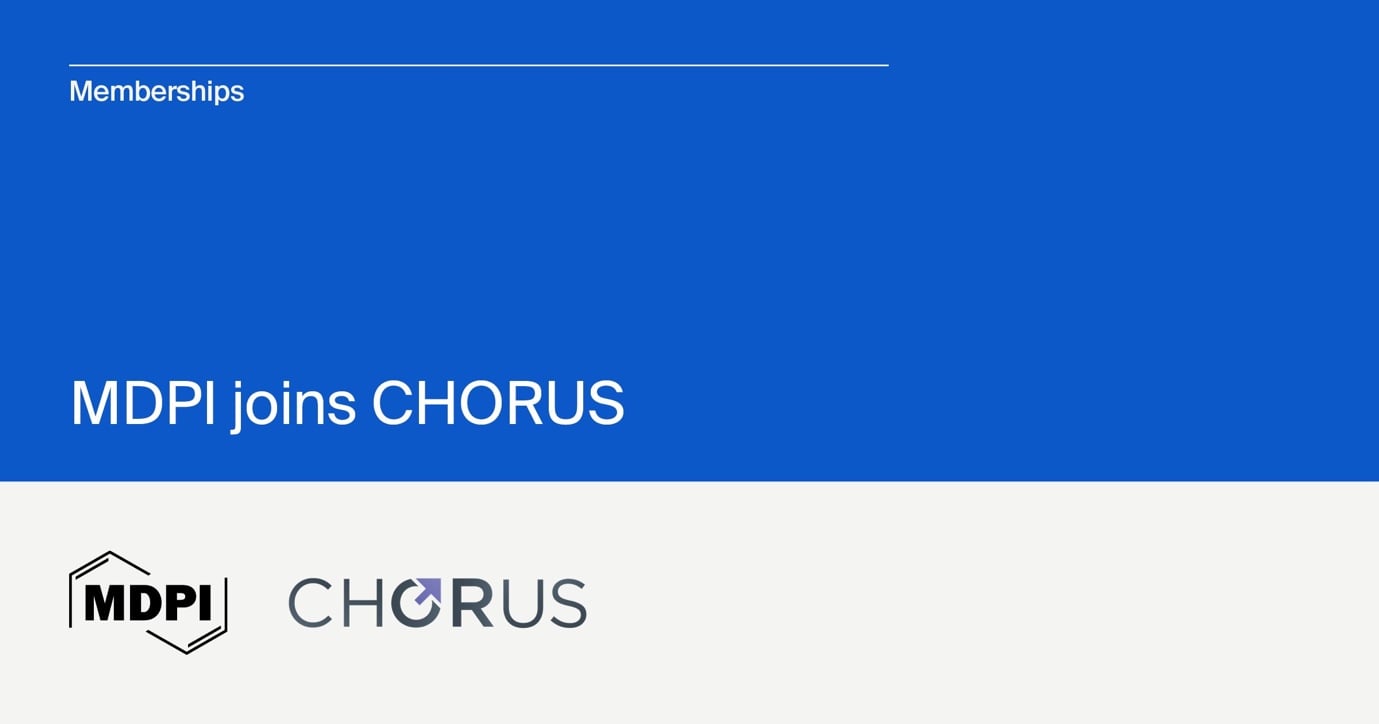
I am pleased to share that MDPI is now an Affiliate Member of CHORUS, a not-for-profit organization dedicated to ensuring public access to articles reporting on U.S. government-funded research. This partnership highlights our long-standing commitment to advancing Open Access (OA) publishing and meeting funders’ open research requirements.
Read the full announcement here.
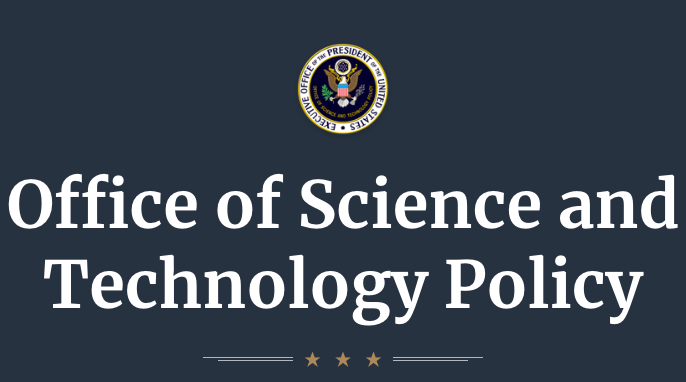
With the White House Office of Science and Technology Policy (OSTP) 2022 memorandum calling for immediate public access to all federally funded research by 2026, this partnership positions MDPI to further support academic institutions in adhering to national mandates while providing authors with fully compliant (CC-BY) OA journals.
The CHORUS platform went live in July 2014 and includes NASA, the U.S. Department of Energy, the U.S. Department of Defense, the U.S. Geological Survey, and the National Science Foundation.
“This partnership positions MDPI to further support academic institutions in adhering to national mandates”
Joining CHORUS perfectly aligns our mission as the leading OA publisher, which is to drive transparency and innovation in scholarly publishing, with that of CHORUS itself, which is to advance Open Access research. It will also support MDPI publications from organizations such as NASA, with 1,200 research papers published by NASA-affiliated authors as at 31 August 2024.
Impactful Research
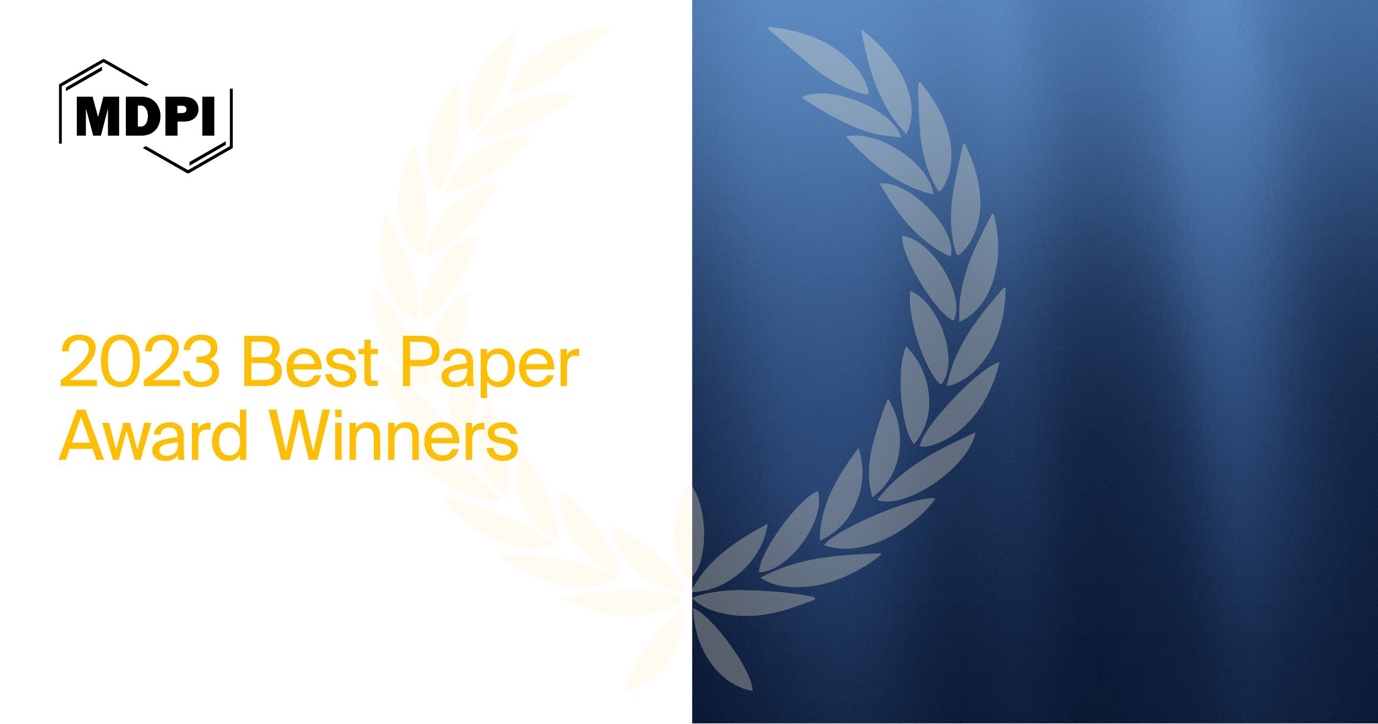
MDPI’s Best Paper Awards—Award-Winning Papers in 2023 Announced
MDPI is committed to supporting and recognizing the academic community and is proud to announce the recipients of the 2023 Best Paper Awards, which recognize high-quality papers of significant scientific merit and impact. Each year, the editors of our journals carefully select papers that showcase outstanding scientific achievement.
This year, 115 Best Paper Awards were presented, chosen from 346 exceptional papers in a highly competitive selection process. Congratulations to the authors for their remarkable contributions!
To learn more about all the awardees and their research projects, visit the following pages:
- Biology and Life Sciences
- Business and Economics
- Chemistry and Materials Sciences
- Computer Sciences and Mathematics
- Engineering
- Environmental and Earth Sciences
- Medicine and Pharmacology
- Public Health and Healthcare
- Social Sciences, Arts and Humanities
- Physical Sciences
About MDPI Awards
MDPI regularly offers various awards to recognize researchers, particularly young scientists, and to promote communication within the scientific community. These awards exist to inspire and acknowledge talented scientists who have made significant contributions to advancing their fields.
To find out more MDPI awards, please click here.
“Our awards exist to inspire and acknowledge talented scientists”
Inside MDPI
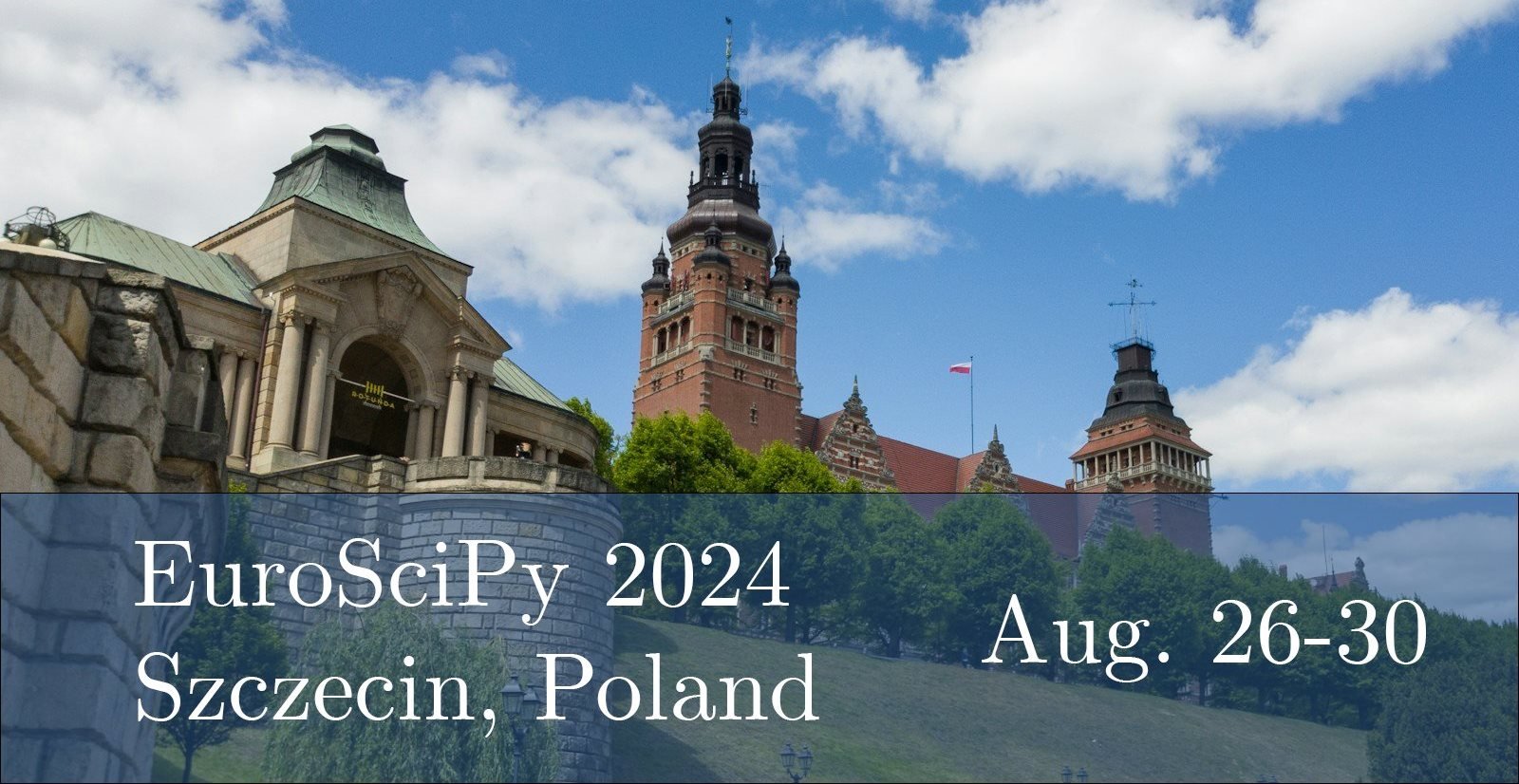
MDPI AI Team Presented at EuroSciPy 2024 in Poland
As part of the CEO Letter, I hold dear this ‘Inside MDPI’ section, where I have an opportunity to highlight various projects, teams and updates within our organization. As such, I’m happy to showcase the following presentations from members of MDPI’s Artificial Intelligence (AI) team, which were recently presented at the EuroSciPy 2024 (16th European Conference on Python in Science). This conference took place in Szczecin, Poland from 26–30 August.
“This event was a great opportunity to reinforce our commitment to innovation and excellence in publishing”
MDPI colleagues Frank Sauerburger (AI Tech Leader) and Daniele Raimondi (Senior Data Scientist) both presented at the conference. Frank discussed MDPI’s AI infrastructure, while Daniele showcased a new methodological approach we have been developing to track the journey of rejected academic manuscripts. This approach combines AI, data science and analytics to improve the identification of manuscripts and authors, enhancing our understanding of publishing dynamics.
This event was a great opportunity to reinforce our commitment to innovation and excellence in publishing. It also allowed us to contribute to the academic discussion on integrating AI and data science into scholarly communication.
From data analysis in Jupyter Notebooks to production applications: AI infrastructure at reasonable scale – Frank Sauerburger
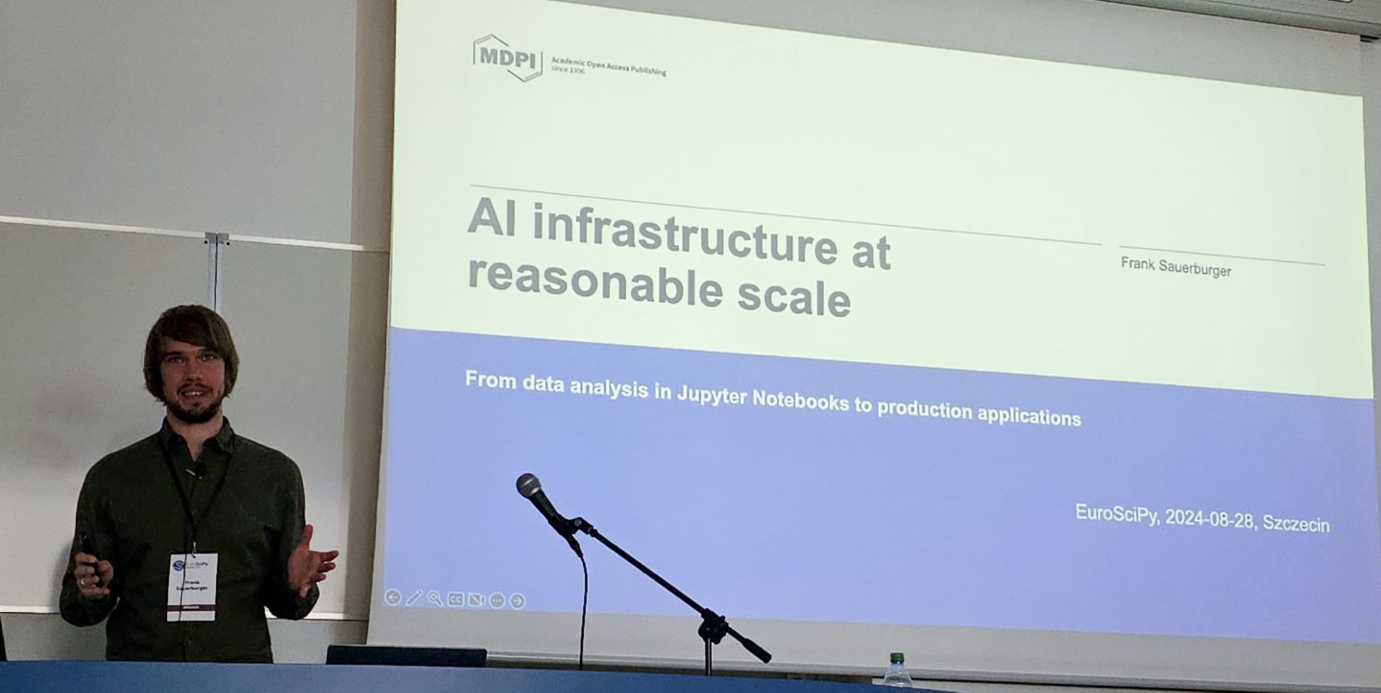
Frank’s presentation on MDPI’s AI infrastructure provided a chance to showcase the advanced technological frameworks that power our operations. Given the technical and academic focus of EuroSciPy, this talk demonstrated how MDPI’s AI capabilities are not only cutting-edge but also central to driving efficiency and innovation in scholarly publishing. Engaging with the EuroSciPy community helps position MDPI as a leader in applying AI within the publishing industry, fostering potential collaborations and attracting interest from top researchers.
A Qdrant and Specter2 framework for tracking resubmissions of rejected manuscripts in academia – Daniele Raimondi
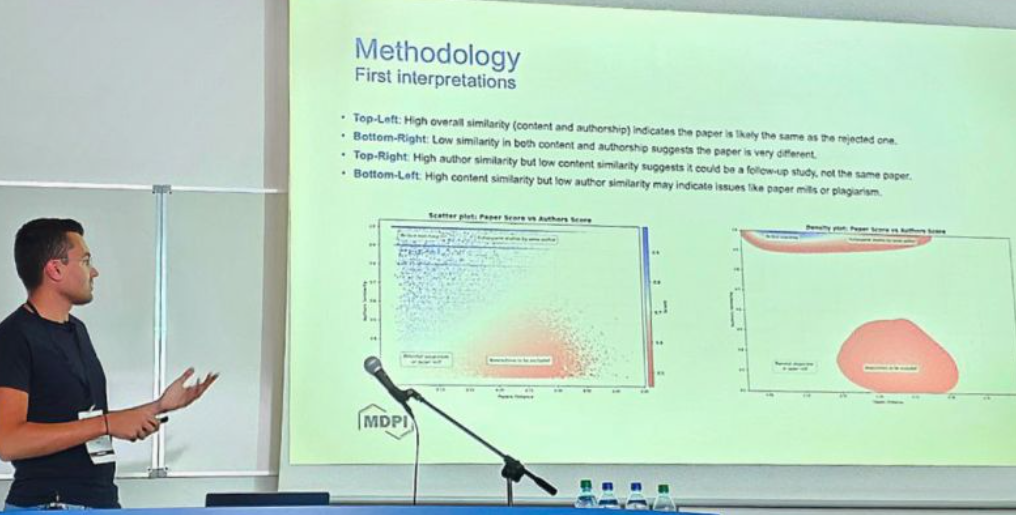
Daniele’s talk on the novel methodological approach that combines AI, Data Science, and Analytics was crucial in highlighting how MDPI is advancing the precision and effectiveness of manuscript and author identification. This approach is pivotal in enhancing our understanding of publishing dynamics and ensuring the quality and integrity of the academic content we manage. By presenting at EuroSciPy, we had the opportunity to engage with an audience deeply involved in scientific computing, gaining feedback and insights that could further refine our methodologies.
Thank you, Frank and Daniele, for representing MDPI so well!
I will share more about MDPI’s AI team and projects in upcoming CEO Letters, as we have a well-rounded AI and Data Team working on an exciting suite of AI products for MDPI and the scholarly community at large.
Coming Together for Science
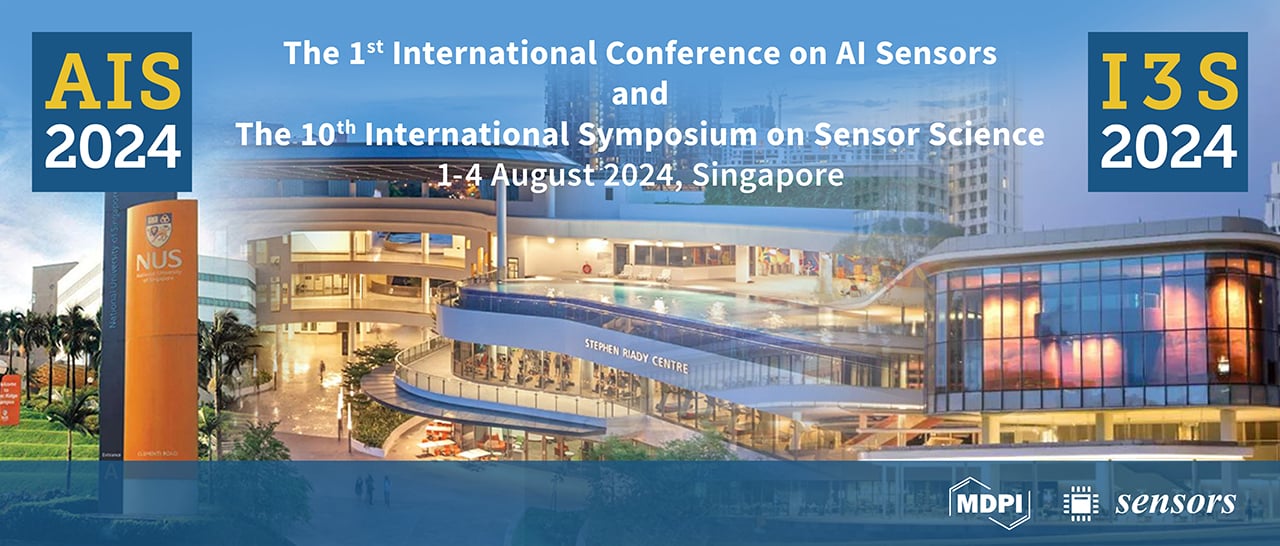
The 1st International Conference on AI Sensors & The 10th International Symposium on Sensor Science
I am pleased to share the success of our MDPI conference The 1st International Conference on Artificial Intelligence (AI) Sensors and the 10th International Symposium on Sensor Science in Singapore this past 1–4 August.
With nearly 400 attendees, the event brought together researchers and industry experts from China, Singapore, Japan, Korea, Taiwan, India and other countries to share their findings on the latest developments in sensors, sensing technology, artificial intelligence for sensing applications and AI-enhanced sensing systems.
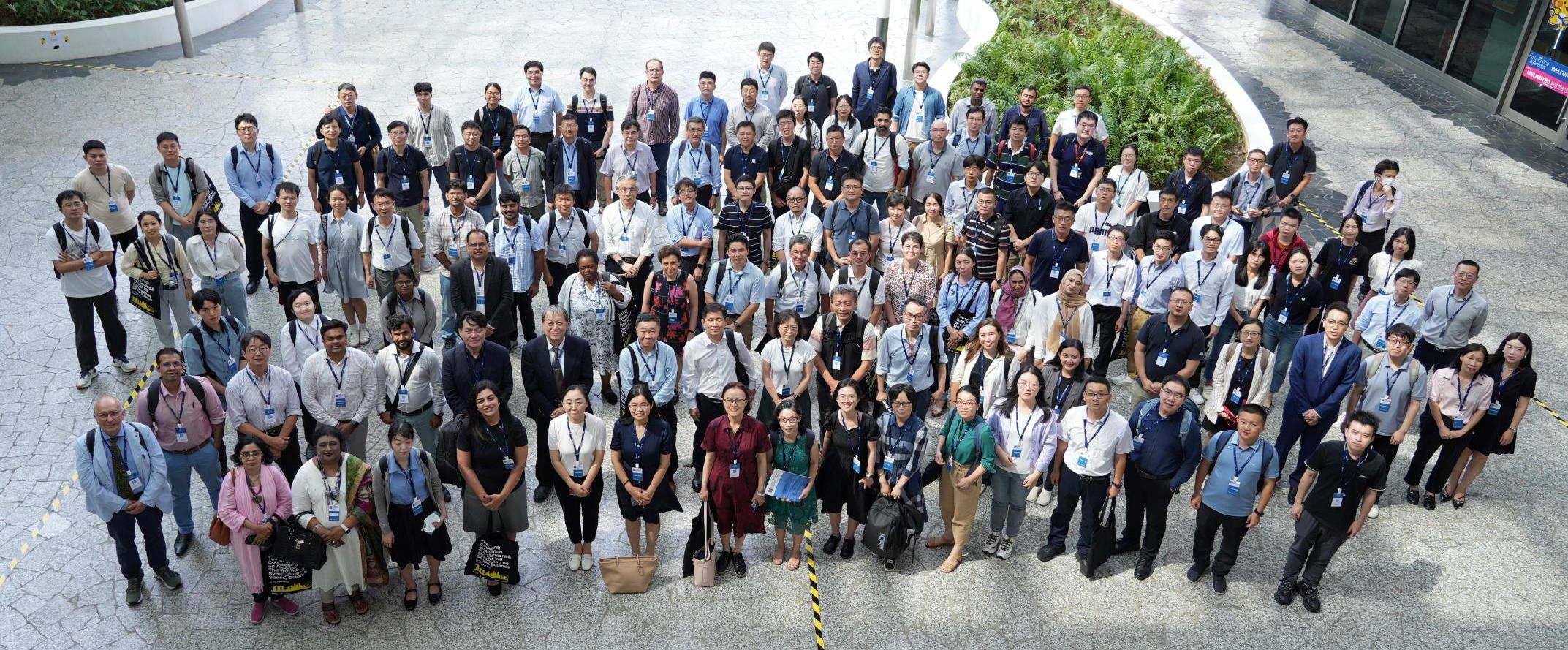
We accepted a total of 355 abstracts, featuring 772 authors from 28 countries. Over the course of the four-day event, 66 posters were displayed and 296 talks were delivered, including 4 plenary talks, 46 keynote speeches, 122 invited talks, and 124 selected oral presentations. View the event gallery here.
I am pleased to announce the winners of the four awards, including Best Presentation and Best Poster, recognizing the contributions of our participants during the conference.
Looking ahead, the 2nd International Conference on AI Sensors and Transducers is scheduled to take place from 29 July to 5 August, 2025, in Bangkok, Thailand.
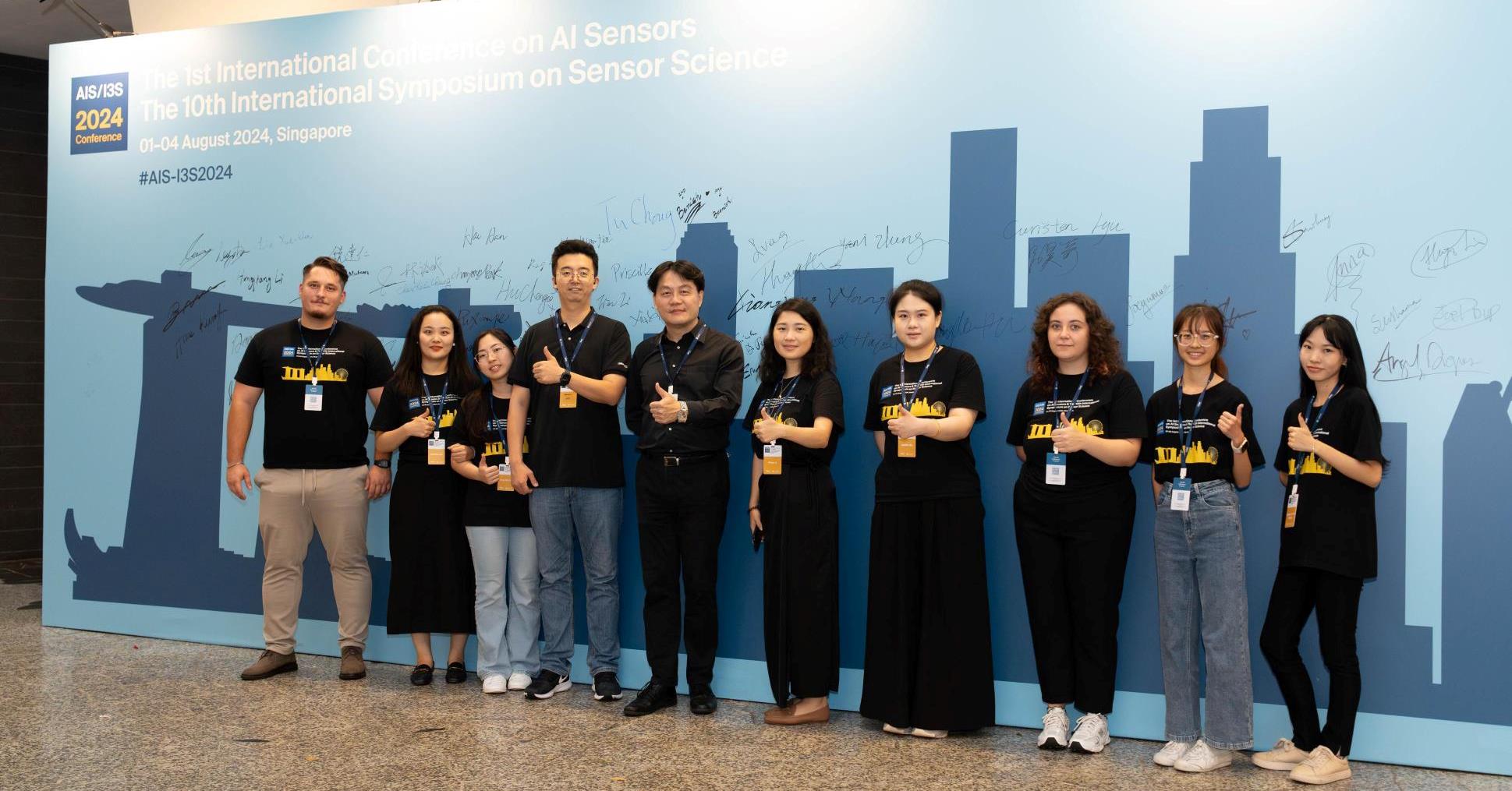
Thank you to our Conference team, including Ionut Spatar, Teodora Nicoleta Cremene, Ang Kai Lin, Benjamin Tay, Leong Jin Yue Esther, Wong Jolin, Judith Wu, Alethea Liu and Flora Li, who were involved in making this event a success. A big thank-you also goes to our local MDPI colleagues for their support: Yu Nwe Soe, Hen Chu Yang, Kwah Zhi En Watcharapong, Zephan Yang, Daphne Neo, Huimin Cheng, Nathan Li and Ting Yin.
Upcoming In-Person Event
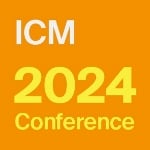
25–27 September, 2024
The 5th International Conference on Materials: Advances in Material Innovation
Location: Basel, Switzerland
ICM 2024 will unite experts to share insights on recent advancements in Materials Characterization, Processing and Manufacturing.
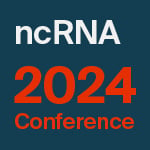
7–9 October, 2024
Non-coding RNA World 2024: Exploring Mechanisms, Designing Medicines
Location: Basel, Switzerland
ncRNA 2024 will explore the latest advances in the field, covering topics from basic biology to medical and technological applications.
Find more upcoming MDPI events here.
Closing Thoughts
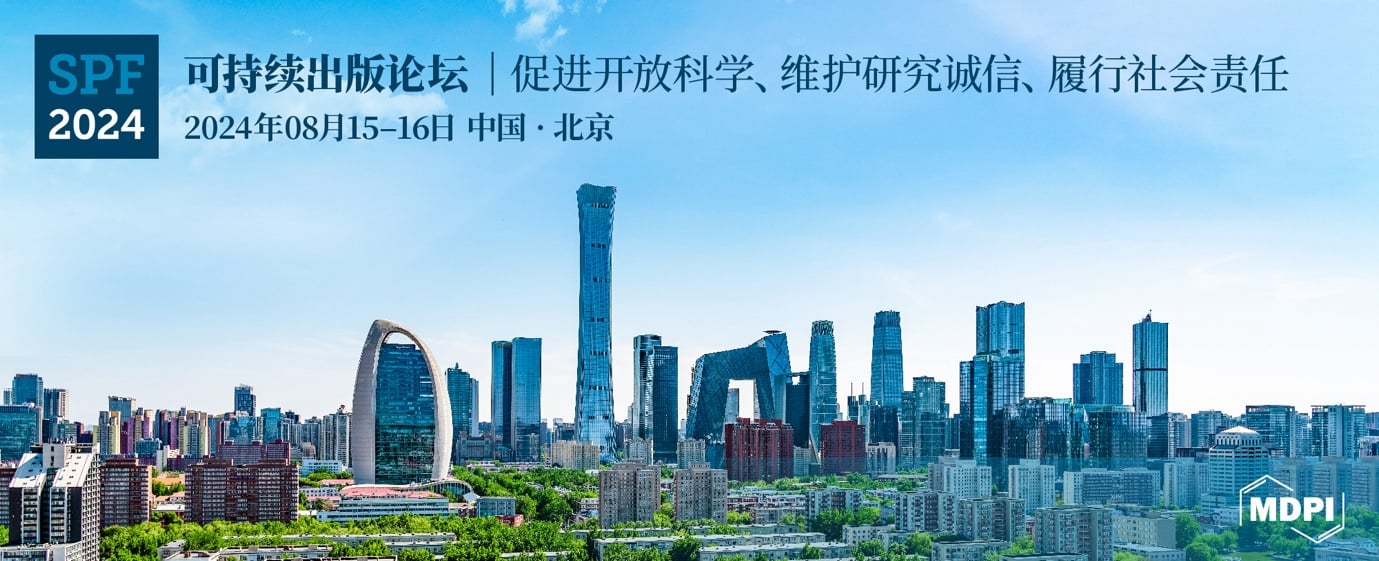
The 2nd Sustainable Publishing Forum
In 2022, the International Association of Scientific, Technical and Medical Publishers (STM) outlined three goals to reflect the academic community’s shared aspirations: promoting Open Science, maintaining research integrity and fulfilling social responsibility. Open Science has evolved from the Open Access movement of the early 2000s to become a preferred model in academic publishing. Publishers and academic journals play a crucial role in ensuring research integrity, with efforts to prevent misconduct markedly on the increase now.
As the world faces sustainability challenges, the academic publishing industry is increasingly committed to contributing the achievement of the United Nations Sustainable Development Goals (SDGs). Many publishers are implementing strategies to support these objectives, including ours, which you can view here.
The 2nd MDPI Sustainable Publishing Forum provided a platform for global editors and publishers to discuss these themes, aiming to strengthen collaboration and advance the contributions that scientific publishing can make to academia and society.
“Open Science has evolved to become a preferred model in academic publishing”
The 2nd Sustainable Publishing Forum
We hosted MDPI’s 2nd Sustainable Publishing Forum in Beijing, China, on 15–16 August, attracting nearly 120 attendees from local and international publishers, university presses, scientific and technical journal associations, libraries and the Chinese Academy of Sciences. The event focused on promoting Open Science, maintaining research integrity, and fulfilling social responsibility.
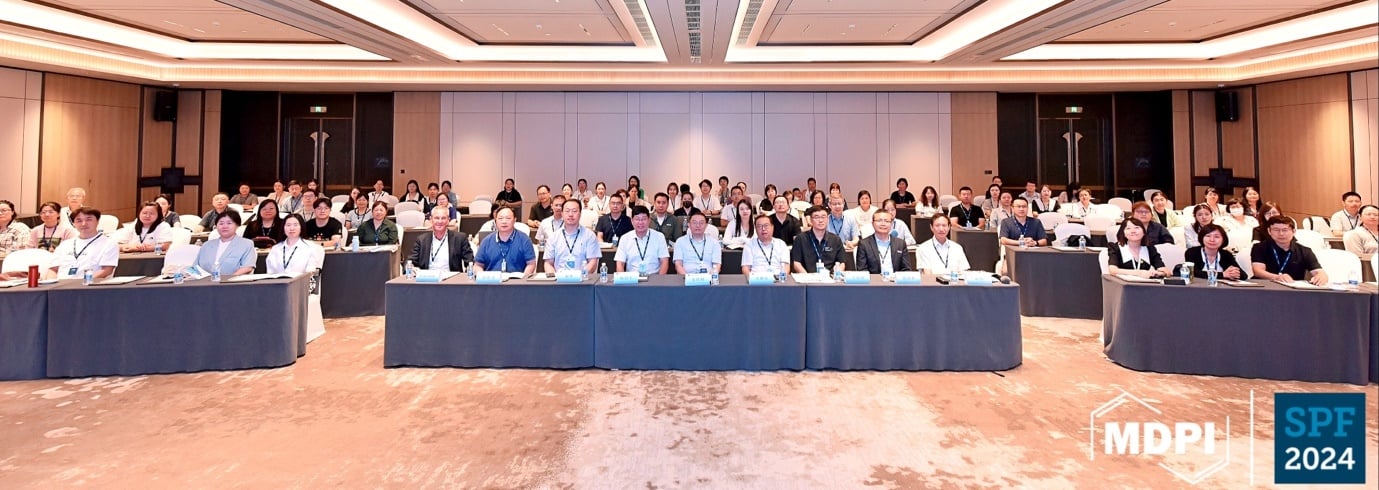
This was an excellent opportunity for us to share more with conference attendees about the approach of our research integrity team. Our Head of Publishing, Peter Roth, also participated, speaking on how to identify and avoid predatory publishers and about the principles that underpin ethical academic publishing.
I extend my thanks to all of our conference speakers, including Hylke Koers (STM Solutions), who presented on STM Trends 2028 and shared insights on the STM Integrity Hub, of which MDPI is a member.
Chief Executive Officer
MDPI AG
19 August 2024
MDPI’s 2023 Young Investigator Awards—Winners Announced

MDPI’s Young Investigator Awards recognize promising early career scientists, acknowledge their contributions, and foster collaboration within the scientific community. We are proud to announce the recipients for 2023, who were carefully selected by the journals’ esteemed Award Evaluation Committee.
We extend our heartfelt congratulations to the 79 winners of MDPI’s 2023 Young Investigator Awards for their excellent contributions in their research field. We look forward to seeing these rising stars continue to contribute to the advancement of science.
MDPI will continue to support and recognize the academic community. To explore details about the awardees by field, please visit the individual pages listed below:
Congratulations to all the winners for their exceptional contributions and dedication to advancing scientific research.
About MDPI Awards:
To support the academic community, particularly young researchers, and to enhance communication among scientists, MDPI journals regularly offer various awards to researchers in specific fields. These awards, serving as a source of inspiration and recognition, help to elevate the profiles of talented individuals who have made outstanding achievements and are making significant contributions to advancements in their respective fields.
To find out more about MDPI awards, please click here.
13 August 2024
Meet Us at the Physical Society of Japan 2024 Annual Meeting, 16–19 September 2024, Hokkaido, Japan

MDPI will be attending the Physical Society of Japan 2024 annual meeting, which will be held from 16 to 19 September 2024 in Hokkaido, Japan.
The Physical Society of Japan (JPS) holds nationwide scientific meetings in the spring and autumn of each year and categorizes all the fields of physics into 19 divisions. During the annual meeting, recent research from all these divisions is discussed at one venue. The autumn meetings are held at different venues, covering the 13 divisions of condensed matter physics and other fields. As many as 5,000 researchers take part in both the spring and autumn meetings, where more than 3,000 presentations and active discussions take place.
The following topics will be covered:
- Theoretical Particle Physics;
- Experimental Particle Physics;
- Theoretical Nuclear Physics;
- Experimental Nuclear Physics;
- Cosmic Rays/Astrophysics;
- Beam Physics.
Division 1: Atomic and Molecular Physics, Quantum Electronics, Radiation;
Division 2: Plasma;
Division 3: Magnetism;
Division 4: Semiconductors, Mesoscopic Systems and Quantum Transport;
Division 5: Optical Properties of Condensed Matter;
Division 6: Metal Physics [Liquid Metals, Quasicrystals], Low Temperature Physics [Ultralow Temperatures, Superconductivity, Density Waves;
Division 7: Molecular Solids;
Division 8: Strongly Correlated Electron Systems;
Division 9: Surfaces & Interfaces, Crystal Growth;
Division 10: Structural Property(Dielectrics, Ferroelectricity, Lattice Defects and Nanostructures, Phononic Properties, and X-ray and Particle Beams);
Division 11: Fundamental Theory of Condensed Matter Physics, Statistical Mechanics, Fluid Dynamics, Applied Mathematics, Socio- and Econophysics;
Division 12: Soft Matter Physics, Chemical Physics, Biophysics;
Division 13: Physics Education, History of Physics, Environmental Physics.
The following MDPI journals will be represented at the symposium:
- Applied Science;
- Galaxies;
- Plasma;
- Atoms;
- Optics;
- Surfaces;
- Instruments;
- Technologies;
- Fluids;
- Magnetochemistry;
- Physics;
- Mathematics;
- Condensed Matter.
If you are planning to attend the above conference, we encourage you to visit our booth and speak to our representatives. We are eager to meet you in person and assist you with any queries that you may have.
For more information about the conference, please visit the official website at https://gakkai-web.net/jps/jps_e_program/2024au/index.html.



